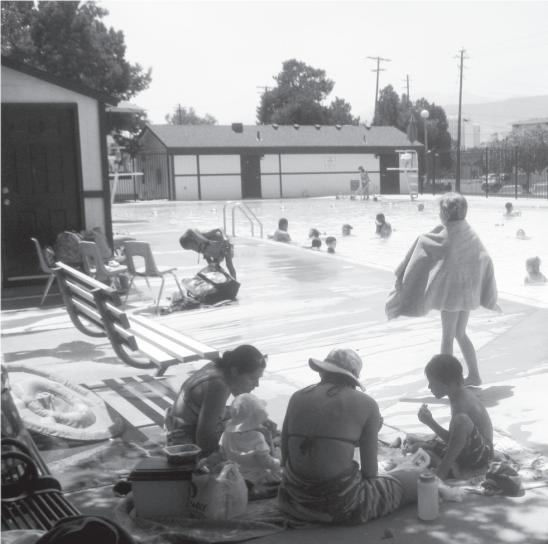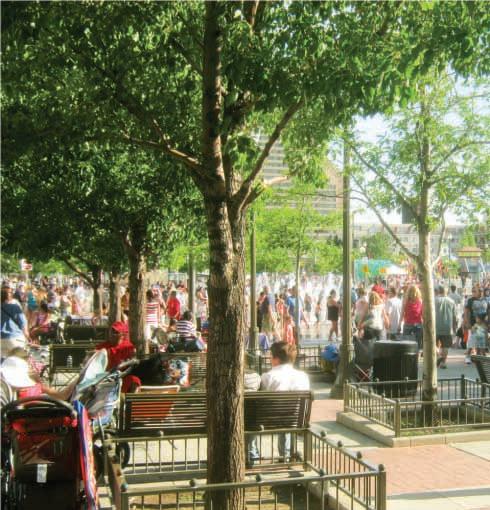
7 minute read
News
from July 11, 2013
One for the workers
In an unusual development in Nevada, a new law will take effect in 11 weeks that will protect employees from employers.
Advertisement
Assembly Bill 181, sponsored by Washoe Assemblymember David Bobzien, makes it “unlawful for any employer in this State to ... require, request, suggest or cause any employee or prospective employee to submit a consumer credit report or other credit information as a condition of employment.”
It also protects workers from being penalized for keeping their employers out of their social media sites, making it “unlawful for any employer in this State to ... require, request, suggest or cause any employee or prospective employee to disclose the user name, password or any other information that provides access to his or her personal social media account.”
The new law also prohibits discipline against workers who avail themselves of the new law and makes any employer who circumvents the law liable to legal relief, such as “reinstatement or promotion of an employee, and the payment of lost wages and benefits.”
Nevada has a reputation for laws that heavily favor employers over workers.
Playing with fire
For hours after the downtown fireworks display ended in Sparks on July 4, fireworks continued to explode in adjoining neighborhoods into July 5. No arrests were reported.
These were personal fireworks, which become more elaborate each year, beyond the sparklers and cherry bombs that once were common. Some of those used this year, such as multi-shot, mortar-style devices, sent fiery charges 30 or 40 feet into the air. The Sparks local code reads, “The possession, manufacture, storage, sale, handling and use of fireworks are prohibited.” In Reno, the municipal code reads, “It is unlawful for Used fireworks remained in Sparks streets. This one contains two any person to have, possess, keep, store, handle, manufacunexpended charges. ture, sell, offer for sale, expose for sale, sell at retail, or use or explode any fireworks and/or pyrotechnics.”
Washoe County code: “No person may possess, discharge, set off or cause to be discharged in or into any portion of a county park any firecrackers, torpedoes, rockets, fireworks, explosives or other substance harmful to the life or safety of any person.”
There is no one-size-fits-all law on the matter. Each municipality has its own, and some of them are unusual. Nye County, for instance, has ordinances that seem to encourage the use of fireworks—in other counties. Under the law, purchase of fireworks is legal, but using them or keeping them in Nye County is not.
“You can purchase fireworks here and when you check out you have to sign a fireworks purchaser’s form that says you are not going to discharge them other than at a county-approved shooters site with a valid permit, and you are not going to lie when you fill out the form,” fireworks merchant Doug Burda told the Pahrump Valley Times last week. “You also agree that you will remove the fireworks from Nye County within 24 hours. Basically the customer understands that when they come here, they are going to get a good deal on fireworks, they can’t shoot them off here, and they have to get them out of here within 24 hours.”
In California, police closely watch the Nevada border. In the last two weeks of June, officers in San Bernardino County alone confiscated more than 12,000 illegal fireworks, some of them trucked in from Nevada.
What’s with this heat?
Reno has been getting hotter for 70 years
“I know darn well that it’s hotter here than it was when we were kids.” Dennis Myers The comment came from one of a group of mostly Renoites at a party in Verdi last month. After that comment, there was a murmur of agreement from those surrounding the speaker, most of whom grew up in Reno in the 1950s and 1960s. The occasional days of three-digit temperatures Reno has been seeing in recent weeks likely reinforces that opinion. But such comments in more diverse groups will often result in disagreement, sometimes from those who deny climate change is happening.
Nina Oakley Climatologist
While there are fluctuations from year to year, there is indeed data that shows Reno has been getting steadily hotter since about the Second World War, though whether that fact says anything about the region’s climate is far from certain.
In the late 1940s and 1950s, there were only two years (1950 and 1958) when Reno’s average annual temperature was above 50 degrees.
But since 1980, there were only two years (1982 and 1985) when Reno’s average annual temperature was below 50 degrees.
On a flow chart, there are fluctuations, but also a steady upward rise over seven decades. So the data is there to show Reno is generally hotter now than it was. But data is always subject to interpretation. Is Reno hotter because the climate has changed at this point near the Sierra—or because Reno has become a larger urban area, what some people call an urban heat bubble? Such islands are caused by buildings preventing surface heat from dissipating into the night sky and a lack of evaporation and transpiration through plants, among other factors.
Western Regional Climate Center research climatologist Nina Oakley said, “There is also the urbanization, the effect of urbanization, an urban heat island in Reno. … How do you separate what’s happening in the atmosphere from what’s the effect of urban heat islands?”
In fact, she said, there are studies nearing completion to try to sort out which factor is having more impact on Reno, but that information won’t be available for a while. One of the frustrations of dealing with scientists is that they seldom provide unqualified, conclusive answers. Most of them will only go as far as the data takes them, and there is a surprising amount of information on Renoarea weather that is not in easily readable form or has not been analyzed to address some issues.
There are ways of dealing with the heat temporarily, as at the Deer Park pool in Sparks. Officialdom tries to watch out for some groups, like senior citizens without air conditioning, by posting hints for dealing with heat.
Translating
Whether the rise in Reno temperatures is something that is happening throughout the Great Basin is also still to be determined. There is data from numerous weather stations, but it has not been gathered together for this kind of use, and some stations do not lend themselves to such use. A station at Beowawe has been in place only since 1972, so comparing it to the much longer emplaced Reno station is less than fruitful. One Battle Mountain station stopped operating in 1945. As far as we have been able to tell, there is no table or list showing a statewide annual average temperature.
Non-scientists react to different kinds of information. Some may cherry-pick information to support what they want to believe. Others have an inclination to project a small amount of experience onto a broader field, their personal impressions—such as a couple of brutal summers in a row—leading them to sweeping conclusions.
Justin Broglio of the Desert Research Institute said, “We get the same question in the winter time during the snowfall. When there’s no snowfall at all, people call with the same kind of question. You know, ‘We’ve had two years of no snowfall.’” And they want to know whether that shows a trend.
Some climate experts challenge the whole notion of heat islands. National Climatic Data Center scientist Thomas Peterson wrote in one study, “Additionally, as a [scientific] community, we need to update our understanding of urban heat islands, to realize that this phenomenon is more complex than widely believed by those not immersed in the field. We should not view all oddly warmer stations as indications of UHI. Some urban stations are indeed warmer than nearby rural stations but almost the same number are colder.”
It’s just one of the issues still to be settled about Reno’s climate. To those suffering from the heat, it may not matter what the cause is.
According to the Centers for Disease Control, “The state with the highest average annual hyperthermia-related death rate during 1999—2003 was Arizona (1.7 deaths per 100,000 population), followed by Nevada (0.8) and Missouri (0.6).” Clark County is likely responsible for most of that ranking. Ω
Justin Broglio Desert research institute
HEAT RISING?
2012 is the most recent year for which there are complete temperature numbers. Here are the average annual temperatures for Reno in the second year of the last seven decades:
1952 48.35 1962 48.22 1972 48.93 1982 48.45 1992 53.68 2002 54.03 2012 56.40
Community

Hundreds of people jammed into downtown Sparks for the July 4 fireworks. During the hours before the fireworks began, a live band played, families and groups put up dozens of tents on the lawns, kids played in the children’s fountain and vendors—like an ice cream truck owner—sold their wares.











